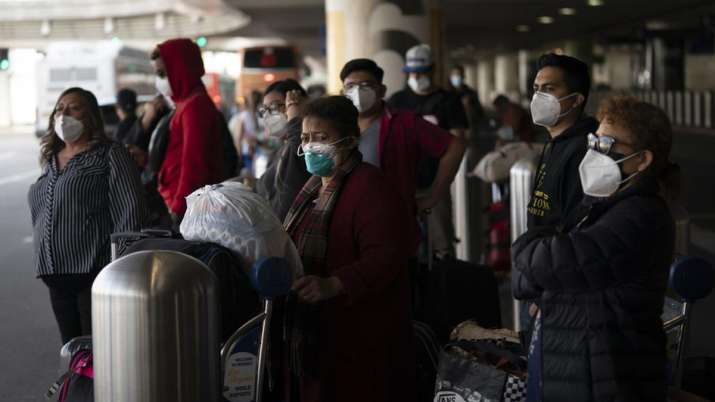
Passengers wait for a shuttle to arrive at Los Angeles International Airport in Los Angeles on Monday (December 20).
Federal health officials said on Monday that Omicron has overtaken other types and is now the dominant version of the coronavirus in the US, accounting for 73 percent of new infections last week. Numbers from the Centers for Disease Control and Prevention showed a nearly six-fold increase in Omicron’s share of infections in just one week.
In most of the country, it is even higher. Omicron is responsible for an estimated 90 percent or more of new infections in the New York region, Southeast, industrial Midwest and Pacific Northwest. The national rate shows that there were more than 650,000 Omicron infections in the US in the past week. Since late June, the Delta variant has been the main cause of US infections. As recently as the end of November, more than 99.5 percent were coronavirus deltas, according to CDC data.
CDC Director Dr. Rochelle Valensky said the new figures reflect growth seen in other countries. “These numbers are stark, but they are not surprising,” she said.
Scientists in Africa first sounded the alarm about Omicron less than a month ago, and on 26 November the World Health Organization designated it as ‘a form of concern’. The mutant has since been shown in about 90 countries. Much remains unknown about the omicron type, including whether it causes more or less severe disease. Preliminary studies suggest that vaccination will require a booster shot for the best chance of preventing Omicron infection, but even without the additional dose, vaccination should still provide strong protection against serious illness and death.
Omicron beats Delta in the US
“We all have a date with O’Micron,” said Dr. Amesh Adalja, a senior scholar at the Johns Hopkins Center for Health Security. “If you’re going to interact with society, if you’re going to live any kind of life, Omicron is going to be something you’re going to encounter, and the best way to cope with that is through thorough vaccination.”
Adalja said he was not surprised to see what was seen in South Africa, Britain and Denmark with CDC data showing Omicron overtaking delta in the US. He predicted outbreaks over the holidays, including breakthrough infections among vaccinated people and serious complications among unvaccinated people, could put pressure on Delta’s already burdened hospitals.
Dr Eric Topol, head of the Scripps Research Translational Institute, said other countries have seen a sharp increase in omicrons, but US data has shown a significant jump in such a short period of time. Topol also said it’s not clear how much lighter Omicron actually is compared to the other variants.
“It’s great uncertainty now,” Topol said. “We have to rely on it being a lot of hospitalizations and a very serious illness from Omicron.”
The CDC’s estimate is based on thousands of coronavirus samples collected each week through university and commercial laboratories and state and local health departments. Scientists analyze their genetic sequences to determine which versions of the COVID-19 virus are most abundant.
The CDC previously reported that in the week ending December 11, Omicron’s share of new infections in the US rose to 2.9 percent from 0.4 percent a week earlier. But the CDC said Tuesday that they were revising some of the earlier numbers after analyzing more samples. CDC officials said the new data indicated that about 13 percent of infections in the week of December 11 were omicrons, not 3 percent. Although a lot of new infections remain due to the Delta version, “I expect that over time Delta will be out of the crowd by O’Micron,” Walensky said.
Read more: Moderna’s booster dose data shows good results against Omicron
,